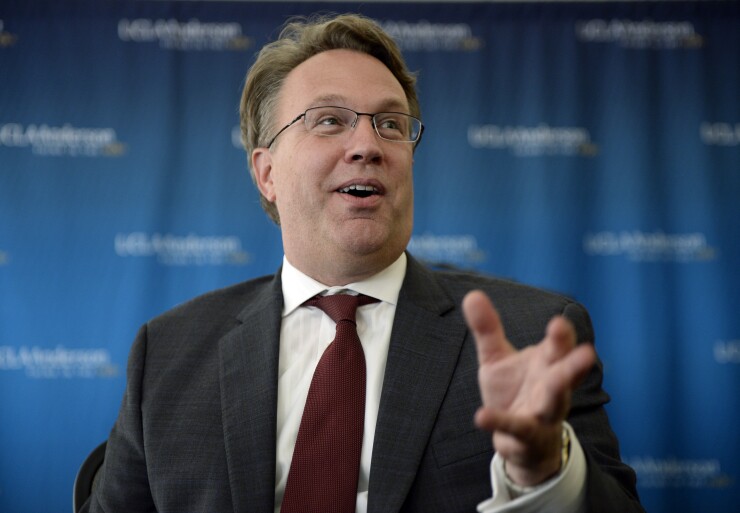In a world where the underlying growth potential of the economy is hard to pin down, targeting a price level — rather than a precise, 2% inflation goal — could be effective, Federal Reserve Bank of San Francisco President John Williams argues in new research.
Writing in an essay published Monday, Williams says officials don’t know how fast the economy is capable of growing.

As a result, it makes sense to set monetary policy using a method that doesn’t rely heavily on estimates of potential output, which is shaped by labor force growth and hard-to-predict productivity. Price-level targeting fits the bill and could give central bankers an extra safety cushion with interest rates close to zero.
“It’s a powerful way to cope with the zero lower bound, but it also has advantages even away from that,” Williams said of the strategy, speaking on a call with reporters on Nov. 3. Because of the uncertain output gap, “there’s this other argument for following price-level targeting all the time that is separate from the lower bound issue.”
The Fed currently aims for 2% inflation, a goal that it says is symmetrical. That means policy makers are equally unhappy if they miss by undershooting or overshooting. Still, they don’t try to make up lost ground by running inflation above target if they’ve been under the goal for a prolonged period, as is currently the U.S. case.
Price-level targeting aims for an inflation goal on average over a given time period, and Williams has suggested for a while that his colleagues consider switching to such a regime. The new paper fleshes out his argument.
Former Fed Chairman Ben Bernanke has also urged the Fed to consider a policy of temporary price level-targeting, aiming for 2% on average over time. Yet other economists, including Fed Governor Lael Brainard, have expressed discomfort with the idea.
“One risk is that the public, seeing elevated rates of inflation, may start to doubt that the central bank is still serious about its inflation target,” Brainard said in an Oct. 12 speech in Washington.
Fed Chair Janet Yellen, whose term at the helm ends Feb. 3, has all but ruled out any imminent change in approach.
“Some observers have suggested raising the FOMC’s 2% inflation objective or implementing policy through alternative monetary policy frameworks, such as price-level or nominal GDP targeting,” Yellen said last year. “The FOMC is not actively considering these additional tools and policy frameworks, although they are important subjects for research,” she said, referring to the rate-setting Federal Open Market Committee.
President Donald Trump said last week that he’ll nominate Fed Governor Jerome Powell to replace Yellen.
Williams told reporters that he favors discussing a new framework now, though he doesn’t want to tie that discussion to near-term strategy. He thinks the level of interest rates that neither stokes nor slows growth has fallen, so the Fed is likely to grapple with rock-bottom rates again in the next downturn — and having a plan for a different inflation framework before that hits could be important.
“It would be optimal to have a decision around what’s the best framework that we should be using well before the next recession,” he said, because it will “take some time” for policy makers to hammer out such an important decision.





